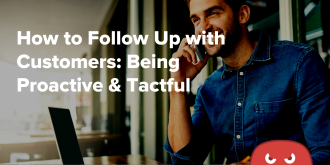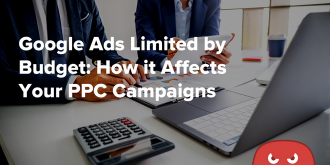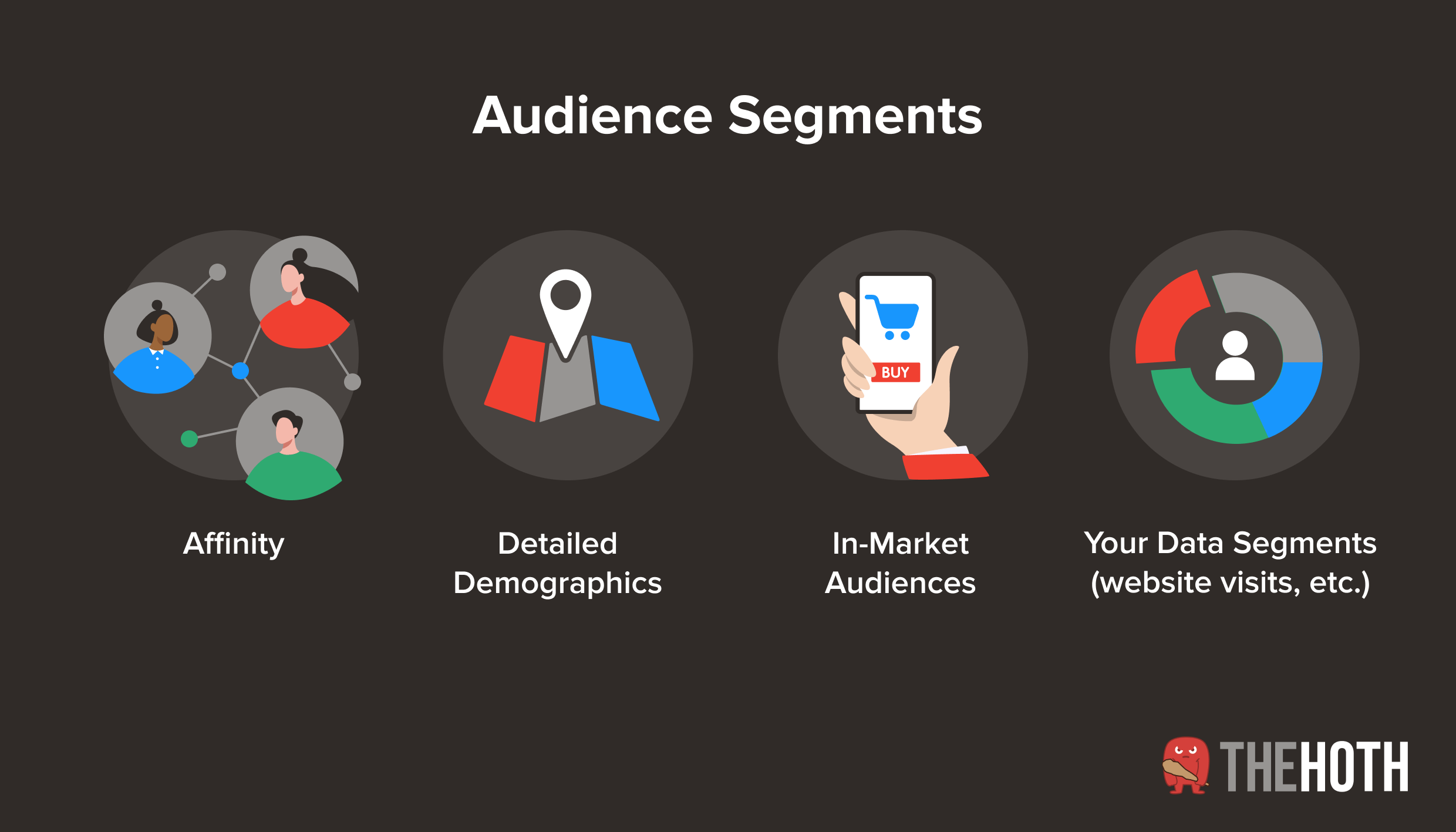Quick Links
Google processes around 40,000 searches every second. Naturally, a lot of those searches are people looking to buy things — creating tons of opportunities to advertise on the search engine.
But you can’t appeal to every last Internet user. Your best bet is to hone in on the searchers who are most likely to buy your products. And to do that, you’ll need to master search ad targeting.
Below, we’ll discuss the importance of properly targeting your search ads to users before covering a few methods for doing so with Google Search Ads.
What Is Search Targeting?
Search targeting involves narrowing down your target search engine users to those that are most likely to buy from you. Once you hone in on your ideal customers, you can craft search engine ads that are more likely to connect with them and persuade them to click through and buy your products.
Most businesses and marketers focus their efforts on Google since it handles over 86% of all global internet searches. By learning how to make and optimize Google Ads, you can take maximum advantage of Google’s massive user base and unique targeting options.
Check out HOTH PPC for more on Google Ads management.
Why Is Search Targeting So Important?
Google Ads cost money, so you need to make sure you’re earning a return on that investment. Your ads need to convert as many of your customers as possible.
Trying to appeal to everyone won’t work. You must focus on the internet users most likely to find your product or service useful. Otherwise, your search ads will seem irrelevant.
That’s what search targeting is all about. Once you’ve performed enough customer research, you can define who your customers are in terms of demographics and psychographics.
From there, you can craft search engine marketing ad campaigns that connect with your target users and get them to click through. If your ads align with your brand, products, or services, then you’ll likely see plenty of SEM success.
All that said, search targeting is never “complete.” Industries change, customer problems evolve, new competitors emerge, search engines adjust their algorithms, and so on. You’ll have to continually optimize your search targeting to keep up with an ever-shifting environment.
The Role of Keywords in Targeting
Keywords are specific words or phrases your target audience uses to look for things on Google and other search engines. If you know the keywords your audience uses, you can tailor your Google ads to reflect their searches.
That will help your ad appear in more audience searches, optimizing your ad budget. Plus, your ads will be more relevant to the searcher, making them more likely to click and buy.
Now, SEM keywords are slightly different from SEO keywords.
SEO is all about organic results. In other words, it doesn’t involve paying for ad placement. The content’s relevance and quality take center stage — Google uses advanced algorithms that weigh hundreds of factors, including keywords on a page, to try and present users with the most relevant results.
SEM is similar in that relevance matters, but you’re paying for every single click. So you need to make sure that you target the right keywords, and then create ads and landing pages that are relevant to those keywords. This can often mean including the keyword itself in ad and page headlines.
For most keywords, ads (targeted through SEM keywords) will show up at the top of Google results.
How to Target the Best Keywords in Your Google Ads Campaigns
You can’t just create a campaign with random keywords and think it will bring in customers. You need to understand what your target audience is looking for, what terms they use to explore similar products and more.
1. Brainstorm Your Keywords
Here are four broad types of keywords to think about when you first start brainstorming:
- Generic keywords: These are relevant to the type of product or service you sell, for example, “exercise supplements.”
- Related keywords: These don’t directly point to your business but deal with a similar subject. For instance, if you sell exercise supplements, a related keyword might be “weightlifting.”
- Branded keywords: These mention your brand.
- Competitor keywords: These mention your competitors. They may be similar to brand keywords, but substituting your competitor’s name for yours.
Once you list some keywords for the above categories, there are several ways you can keep building on that list:
- Study your audience: Surveying your audience, reading relevant forums, checking social media, and other methods can help you find their problems, what solutions they’ve tried, and so on.
- Using Google: Type each keyword into Google. Take note of autocomplete results, People Also Ask, and Related Searches.
- Modifiers and synonyms: Consider variations on your keywords, such as location, age, and price point, to name a few. Look at synonyms as well. For instance, Internet fitness enthusiasts may be searching for “protein supplements” and “workout supplements.”
2. Use Keyword Research Tools to Expand Your List
To efficiently build on your keyword-gathering, you should use keyword research tools to uncover keywords you may not have thought of.
Tools like our free Google keyword planner tool or SEMrush can be a great help here — they show you tons of variations and related keywords with the accompanying search data. Add any relevant keywords to a spreadsheet or keyword list.
Ideally, you want high-volume (if possible), low-competition keywords. This usually means looking for long-tail keywords — longer keywords that are highly targeted. Long-tail keywords tend to have lower search volume and competition but are highly relevant, increasing the chances of getting clicks.
3. Spy on the Competition if Possible
Studying similar brands gives you a more complete picture of the competitive environment. The HOTH’s free competitors keyword tool is a great place to start. It lets you explore your top competitors for organic and paid keywords. Paid tools like Ahrefs or SEMrush can help you see their Google Ads keywords as well.
You can also plug your keywords into Google and study what kinds of ads are showing right now. Take note of which types of keywords show the most ads. This is usually an indication of “commercial intent” — that the searchers are almost ready to buy.
That said, don’t just copy what your competition is doing. Some brands may not know Google Ads too well. Weigh what your competition is doing against the rest of your analysis.
4. Evaluate Each Keyword’s Search Intent
A keyword’s search intent illustrates the reason a user searches for something online.
For instance, someone starting their search with “how to” may be hunting for informational content, such as a guide on completing a task. On the other hand, typing “near me” indicates they’re ready to visit a store or buy something.
Google’s algorithm evaluates ad relevance through something called “Quality Score.” It’s a metric that compares how often your ads get clicked, whether users stay on your landing pages, and more. So it’s not enough to just bid highly, you need to understand the user intent of each keyword.
5. Narrow and Organize Your List
You should have a long list of keywords at this point. It’s now a matter of cutting out the least relevant. Many of the shorter-tail keywords will probably go at this point. You want to hone in on those highly-relevant, long-tail keywords.
6. Use Stag Ad Groups and Negative Keywords to Only Target the Right Searchers
Ad groups are one or more ads that have similar targets. You set your bid for when the keywords in these groups trigger to make the ad appear in a search.
Single Theme Ad Groups involve grouping your keywords together by specific themes to create highly targeted ad groups. You don’t need to budget for and manage each keyword, like under a Single Keyword Ad Group structure.
STAGs can also increase impressions, making automated bidding strategies more viable and improving your ability to test different ad copy.
Consider negative keywords as well. These let you screen out users who are searching for content related to your keywords but not relevant. Using these will help you prevent irrelevant searchers from wasting your money.
Responsive Search Ads
Responsive search ads allow you to enter multiple headlines and descriptions that are automatically tested by Google. These tests determine which combinations perform best, which allows your ad to better fit potential customers’ searches:
Marketers know how crucial the ability to split test and compare various campaigns. Even though it means you’ll be building more ads out in order to test, it’s worth it to know which campaigns are connecting with your audience.
Google sees how crucial this is too. In fact, starting June 30th, 2022, responsive ads will be the primary ad type used by Google Ads.
If you want to learn more about responsive ads and how they work, check out this comprehensive blog post for a deep dive into how to get the most from yours.
Audience Targeting
Audience targeting is a Google search targeting tactic that helps you more accurately select who will see your ads. It’s available for Search ads as well as Google Display, YouTube, and Hotel ads.
Each audience is made up of specific segments estimated by Google — groups of searchers with shared interests, demographics, search intents, and more.
You can add audience targeting on top of your keyword strategy. That way, you can present your ads only to specific searchers looking for your chosen keywords.
As a result, you can narrow your search down targeting even more and optimize your Google ad spend.
Back to the supplements example: one of your keywords might be “workout supplements for men,” but your target market is men who are just looking to get in shape for the summer instead of something like competitive athletes.
Google’s custom audiences can help you add another layer to your targeting to screen out those athletes and focus on your true target audience.
Below are the different ways you can create audiences on Google:
Affinity
Affinity involves targeting users based on their habits, interests, and passions. Google determines which internet users matched those affinities based on their recent browsing and search histories.
You can choose from a wide range of affinity options. Once you do, your search ads will only show for people already interested in your niche or industry.
Detailed Demographics
Detailed demographics lets you target users based on age range, gender, parental status, or household income.
For example, if you’re targeting women aged 30-40, demographics can help you screen out men and women outside this age group.
In-Market
Customers that are actively looking to buy something could help you generate your quickest sales. The in-market targeting option helps you find these customers by targeting people based on their recent purchase intent.
Your Data Segments (Previously RLSA — Remarketing Lists for Search Ads)
Your marketing message might be different for people who have already visited your site or looked at your offers.
Your Data Segments — formerly Remarketing — let you target searchers that have already interacted with your brand in some way on a desktop or mobile device. That way, you can create well-timed ads while your brand is fresh in their minds.
Some data segments include:
- People who’ve visited your website or app
- Customers who have shared information with you
- People who share similar interests with your customers
Hone Your Search Targeting Today
Billions of searches happen per day. To get your piece of the pie, you’ll need to nail down and continually optimize your search targeting.
Of course, mastering each type of search targeting can take a long time and plenty of resources at first. Plus, Google may make changes to its search ads — and you’ll have to keep up.
If you need a hand in honing your SEM and PPC, schedule a call with The HOTH today. We’re happy to help you maximize the benefits of search ads.















